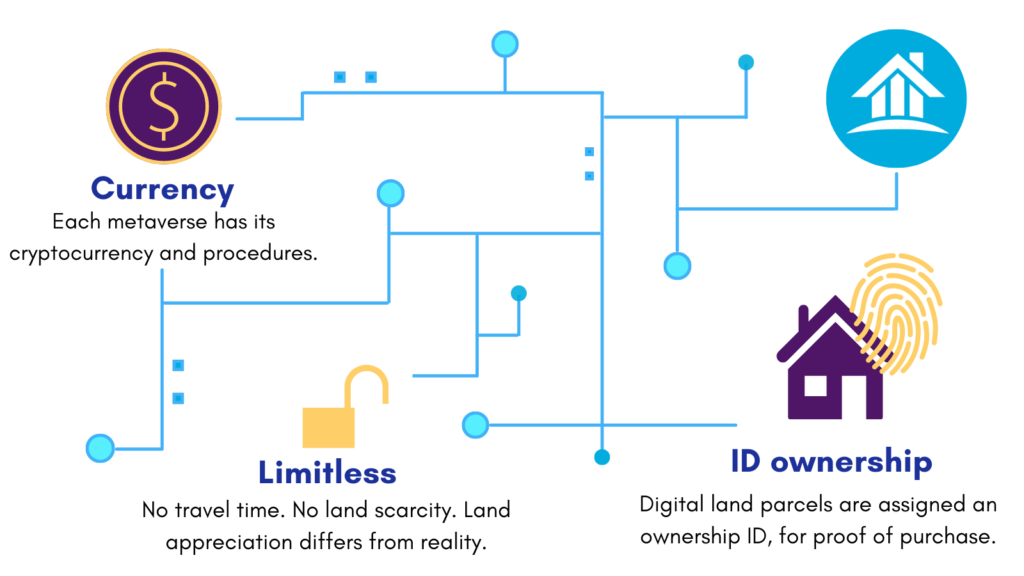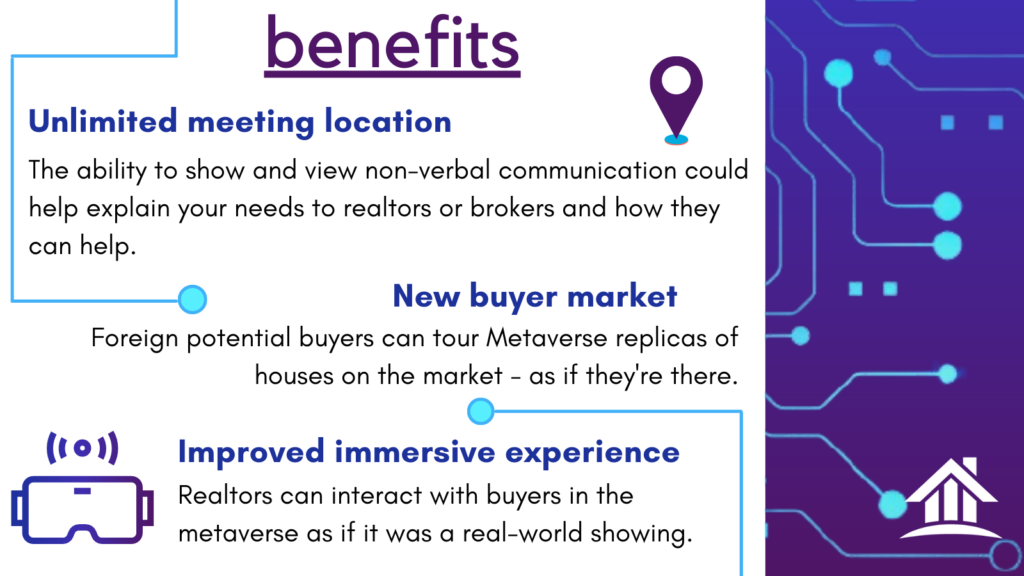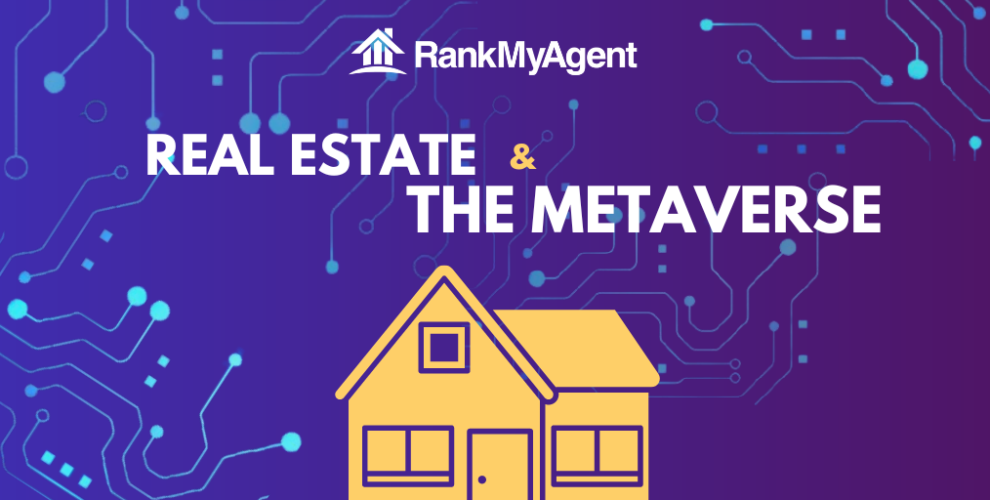Web 3.0, blockchain, non-fungible tokens (NFTs), and the metaverse are new technologies promised to revolutionize every industry we know. We see these topics making headlines every day in the news. Just think of how many times a day we see cryptocurrency this or cryptocurrency that.
The metaverse isn’t just another Bitcoin. It’s not even a recent concept! The metaverse simply describes integrated 3D virtual worlds — imagine games like Roblox or World of Warcraft. These games have been around for decades!
But as technology advances, companies are finding new ways to put the metaverse to use. McKinsey believes that the metaverse could drive physical product sales, reduce the need for physical stores, and enhance in-store experiences. The consulting firm further found that 64% of consumers surveyed were excited about shopping in the metaverse.
This article discusses the metaverse and how it may affect the real estate industry.
What is the metaverse?
The metaverse is any online 3D world where you can interact with others via an avatar. We’re used to metaverses through video games. But companies now want to apply the technology to industries beyond gaming.
For example, instead of using a video conference to meet with someone halfway across the world, you could meet in a metaverse and engage in new ways. Integrate this experience with virtual and/or augmented reality and create a much more immersive experience than just a ZOOM call.
You could also create better digital shopping experiences. Instead of flipping from webpage to webpage, consumers may someday visit virtual malls from the comfort of their homes. Here, people could purchase real-world items in a more mesmerizing shopping experience, and this better user experience could translate to more sales.
The possibilities for the metaverse are endless. And the industry is only beginning. That’s why everyone has high hopes.
Many people are already investing in the metaverse by purchasing land in specific digital universes, hoping that the value of these digital properties will appreciate.
How does buying metaverse land work?
Some metaverses let you purchase unique digital land and other properties. Big names like Snoop Dogg and Steve Aoki already own properties in a metaverse called Sandbox. Decentraland is another popular network where people can purchase unique parcels of land.
Metaverses usually have their own cryptocurrency used as a medium of exchange. Decentraland’s currency is called MANA, for example. To purchase real estate on Decentraland, you ultimately need MANA.
After obtaining the necessary currency, the land purchase process depends on the specific metaverse. Each has its own procedures.
Many assign you an ownership ID to the digital land parcel, similar to an actual deed. Buyers may need to show proof of their real-life ID and address too. Your virtual deed could also come as an NFT.
Like the real world, these properties can be anything from houses to apartments to commercial storefronts. It can also be a plot that you develop into a customized residential or commercial space.
Unlike reality, land in metaverses is infinite. There’s also usually no travel time between two points in a metaverse. In the real world, land scarcity and a property’s location determine a building or land parcel’s value and cause it to appreciate.
A particular area of a metaverse might appreciate for other reasons, however. If you own the digital parcel beside Snoop Dogg, you could expect that that land could fetch a nice premium. High-traffic areas are generally the ones that sell for big dollars.

For example, one parcel of Decentraland land sold for $2.4 million worth of MANA in late 2021. This piece of land was located in the “Fashion Street” area of Decetraland, making it highly valuable. The purchaser, tokens.com, hopes to one day build a virtual shopping centre to sell virtual clothing for digital avatars.
In addition to infinite land, there’s also the potential for infinite metaverses. If Google, Meta, and other large tech companies all started a consumer-targeted metaverse, this could reduce the popularity of Decentraland or Sandbox and then reduce the value of all land there as investors rush to invest in a new metaverse.
Just think of the rise and fall of other websites and networks! You don’t know if your metaverse will be the next MySpace or Tumblr.
How Could the Metaverse Affect Tangible Real Estate?
While the potential for a new way to “invest” in real estate might become viable someday, how can the metaverse affect the real estate we know? One way is through more immersive showings and the ability to meet online in the metaverse.
Realtors currently use many ways to display a property. Photos are the most common. But videos, 3D renderings, and 360-degree cameras are increasing in popularity too.
But imagine a metaverse where potential buyers can walk through online replicas of houses on the market. Suddenly, buyers in foreign locations can view a listing as if they’re there. This could help increase the draw and attraction of a house and encourage more buyers.
Simultaneously, a realtor can take buyers through the property and interact with them in the metaverse as if it was a real-world showing.
The metaverse could also change home buying by giving buyers, sellers, and brokers a place to meet. As a buyer or seller, you may someday have an initial consultation with a realtor in the metaverse when an in-person meeting isn’t viable. Or, suppose you meet your mortgage broker in the metaverse. The ability to show and view facial expressions and body language could help you explain your needs and allow realtors or brokers to reveal how they can help.

The metaverse is not a new technology. But many companies are now trying to apply it to new industries. Buying and selling real estate in the metaverse has significant actual dollar values, though it comes with numerous risks.
For real-world homebuyers and sellers, the metaverse has numerous applications in how we’ll someday view a home or meet with the people who help us in the home purchase or sale process.




